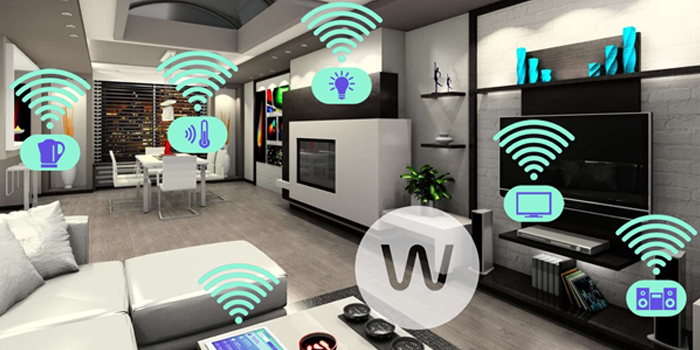Troubleshoot Common Technology Issues and Problems
Technology Issues and Problems are an inevitable part of our digital lives, but with the right approach, most problems can be resolved.

In today's digital age, Technology Issues and Problems has become an integral part of our lives. We rely on various devices and systems to communicate, work, entertain ourselves, and manage our daily tasks. However, as convenient as technology is, it's not immune to problems and issues.
From software glitches to hardware failures, we've all encountered technology-related challenges at some point. In this blog post, we will explore how to troubleshoot common technology issues and problems effectively.
Identifying the Technology Issues and Problems
The first step in troubleshooting any technology issue is to identify the problem accurately. Before diving into solutions, take a moment to observe and document the symptoms. Ask yourself questions like:
- What exactly is happening, or not happening?
- When did the problem first occur?
- Is the issue specific to one device or software, or does it affect multiple devices or applications?
- Have there been any recent changes or updates that might be related to the problem?
Gathering this information will help you narrow down the potential causes and find a solution more efficiently.
Restart or Reboot
It may sound clich?, but one of the simplest and most effective troubleshooting steps is to restart or reboot the problematic device or software. Many issues can be resolved by simply giving the system a fresh start. This action can clear out temporary glitches or conflicts that might be causing the problem.
Check for Updates
Outdated software can lead to compatibility issues and security vulnerabilities. If you're experiencing problems with a specific application or operating system, check for updates. Developers regularly release updates to fix bugs and enhance performance. Keeping your software up to date can often resolve common issues.
Review Error Messages
Error messages are your friend when troubleshooting technology problems. They provide valuable information about what went wrong and can guide you toward a solution. Don't ignore error messages; instead, take note of them and use them as keywords when searching for solutions online.
Internet Connectivity Technology Issues and Problems
Slow or unstable internet connections are common frustrations. If you're experiencing connectivity problems, try the following:
a. Restart Your Modem and Router: Unplug them for about 30 seconds and then plug them back in. This can refresh your connection.
b. Check Other Devices: Determine if the issue is isolated to one device or affecting multiple devices. If it's the latter, the problem might be with your ISP.
c. Check for Interference: Wireless networks can suffer from interference. Make sure your router is away from electronic devices that could disrupt the signal.
d. Contact Your Internet Service Provider: If the issue persists, get in touch with your ISP to check if there are service outages or technical problems in your area.
Malware and Security Technology Issues and Problems
Viruses, malware, and other security threats can wreak havoc on your devices and data. If you suspect a security issue, take these steps:
a. Run a Full System Scan: Use reliable antivirus and anti-malware software to scan your device thoroughly.
b. Change Passwords: If you suspect a security breach, change your passwords immediately, especially for sensitive accounts like email and banking.
c. Enable Two-Factor Authentication (2FA): Enhance your security by enabling 2FA wherever possible.
d. Regularly Update and Patch: Keep your operating system and software updated to close security vulnerabilities.
Hardware Problems
Hardware issues can be more challenging to diagnose and resolve, but here are some common hardware troubleshooting tips:
a. Check Connections: Ensure all cables and peripherals are properly connected. Loose cables can cause various issues.
b. Run Hardware Diagnostics: Many devices, especially computers, have built-in diagnostics tools that can help identify hardware problems.
c. Overheating: Overheating can lead to crashes and performance issues. Make sure your device has adequate ventilation, and consider cleaning out dust from the internals.
d. Hard Drive Problems: If you suspect a failing hard drive, back up your data immediately and consider replacing the drive.
Application-Specific Technology Issues and Problems
If a specific application is causing trouble, follow these steps:
a. Clear Cache and Cookies: Sometimes, accumulated data in your browser or application can lead to issues. Clearing cache and cookies can often resolve these problems.
b. Uninstall and Reinstall: If an application is consistently misbehaving, try uninstalling it and then reinstalling it.
c. Check Compatibility: Ensure the application is compatible with your operating system and hardware.
Seeking Help Online
The internet is a treasure trove of information, and chances are, someone else has faced a similar technology issue. Here's how to effectively seek help online:
a. Use Descriptive Keywords: When searching online, use descriptive keywords based on the symptoms and error messages you've observed.
b. Visit Official Forums: Many software and hardware manufacturers maintain official forums where users can seek help and share solutions.
c. Online Communities: Websites like Stack Exchange, Reddit, and tech-focused forums often have active communities willing to provide assistance.
d. Be Cautious with Downloads: If you come across software solutions online, be cautious about downloading from untrusted sources. Stick to official websites and reputable sources.
Backup and Data Recovery
In some cases, troubleshooting may result in data loss or the need to reinstall the operating system. This is why regular backups are crucial. Ensure you have a backup strategy in place to protect your important files and data. Cloud storage, external hard drives, and automated backup software can be your best friends in times of data loss.
When to Seek Professional Help
While many technology issues can be resolved by following these troubleshooting steps, there may come a time when you need professional assistance. Here are signs that it's time to call in the experts:
a. Physical Damage: If there's physical damage to your device, such as a cracked screen or water damage, it's best to consult a professional repair service.
b. Persistent and Severe Problems: If the problem persists despite your best efforts or if it's a critical issue like data corruption, it's time to seek expert help.
c. Complex Network Issues: Troubleshooting network issues in a large or complex environment may require the expertise of a network administrator.
d. Warranty Concerns: If your device is still under warranty, consider reaching out to the manufacturer or authorized service centers for repairs.
Technology Issues and Problems are an inevitable part of our digital lives, but with the right approach, most problems can be resolved. The key is to stay calm, gather information, and systematically work through the troubleshooting steps.
Remember that regular maintenance, updates, and backups can prevent many problems from occurring in the first place. And when all else fails, don't hesitate to seek professional help to get your technology back on track. By following these guidelines, you'll be better equipped to tackle common technology issues and problems with confidence.
What's Your Reaction?
















